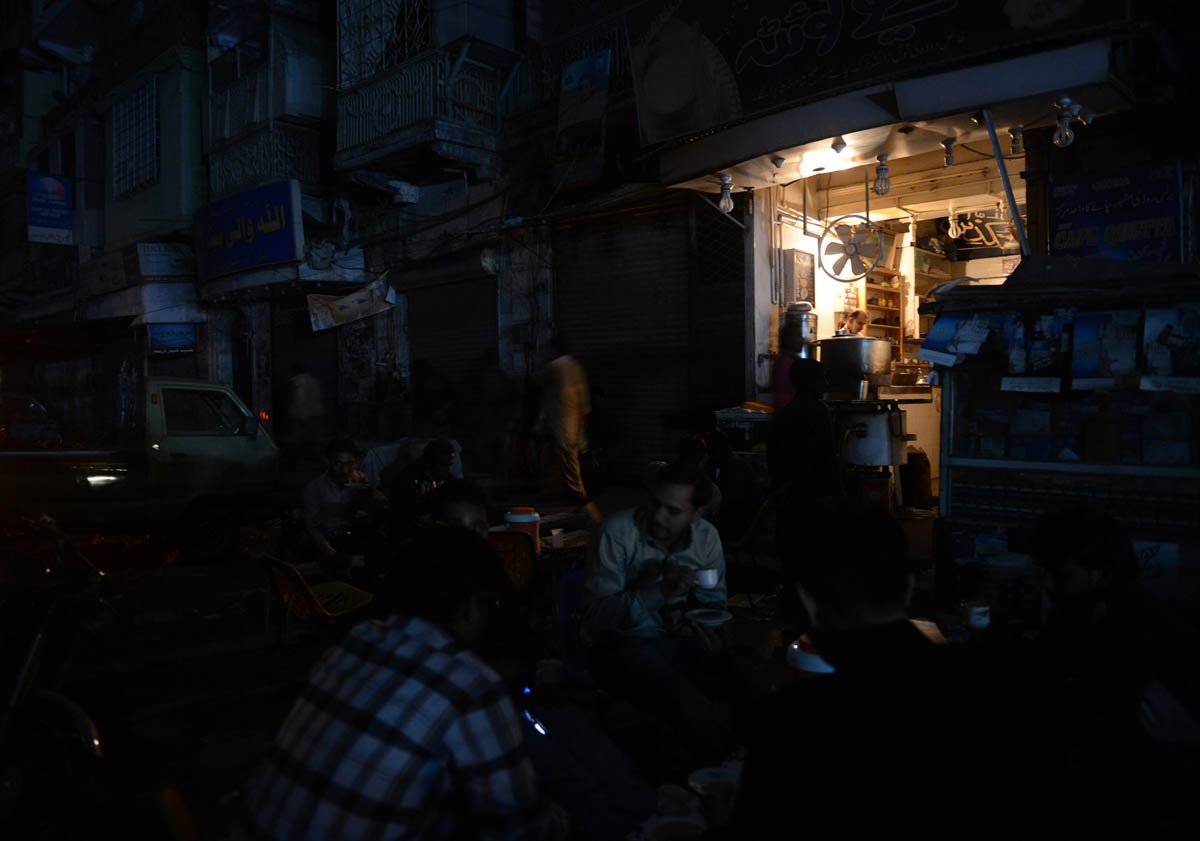
When the industrial equipment stops working, Sher Wahid, already beat up about the double-digit inflation, starts stressing over another productive day lost to load-shedding.
The 24-year-old, who works as a welder in Siddiqabad Bazaar, Bajaur District, specializes in making gates, grills, and chairs but due to the spotty power supply in the area, Wahid cannot manage to get his work done in time. Despite the Federally Administered Tribal Areas (FATA) integrated into Khyber Pakhtunkhwa (K-P) and the installation of a 132 KV grid station in Bajaur, power load-shedding has yet to be curtailed.
Realising the situation he was in, Wahid installed a generator and then came the high fuel costs. “Diesel costs Rs 1,200 to 1,500 daily which burns a deep hole in my pockets,” he lamentingly told the Express Tribune. However, Wahid is not the only one, there are 8 other welding shops in the bazaar which had similar concerns. According to Wahid, albeit working with electricity is costly as well, the use of generators impacts the quality of their work significantly.
The people of Bajaur expected that they would get rid of load-shedding after the integration into K-P but ever since then it has increased two-fold. Wahid, and other residents feel that they were led to believe that after the FATA merger electricity would be free till 2023. Some of the district’s residents accused that after the empty promises, WAPDA is now forcing people to install meters and are deliberately carrying out power load-shedding.
However, WAPDA officials, when contacted by the Express Tribune, said that the department was already suffering heavy losses due to high consumption and lack of meterization therefore it could not afford to provide free electricity.
Muhammad Gul, Sub Divisional Officer (SDO), WAPDA Department for Khar sub-division, said that there was no load-shedding in Bajaur but instead it was overloading which resulted in power cuts.
“We have a specific range of feeders, for example a feeder can withstand loads up to 400 amperes but here it goes up to 900 amperes due to which the automatic feeder trips and the lights go out.”
According to Mohammad Gul, there is no electricity control in Bajaur because people do not pay their bills and do not install meters. “If people install meters then we can control the flow of electricity,” he suggested.
Referring to the meters, the SDO told the Express Tribune, that recommendations had been sent to relevant authorities to install meters in the markets and approval was also granted but the business community does not cooperate. “There is no public interest in installing meters,” Gul remarked.
On the other hand, Tehsil Nazim Khar Sub Division, Haji Syed Badshah, said that we agreed with WAPDA on meters on the condition of providing electricity at a special discounted rate but WAPDA did not agree.
Syed said that if electricity is provided to the people here at a discounted rate then we will install meters.
Gul, the SDO, breaking down the numbers, stated: “This is not in our interest as Bajaur district consumes 17 million units of electricity per month, that is over Rs 160 million but WAPDA only recovers Rs. 8.5 million to 8.7 million. The department has to bear a deficit of over Rs.150 million per month.”
Wahid, when inquired why they were reluctant to install meters, put the blame squarely on WAPDA. “Even when we agreed to install meters, we requested WAPDA for separate transformers but they said that they cannot provide transformers; so the whole matter is pending.”
WAPDA officials said that Wahid’s accusations were only the half-truth as they could install commercial meters for factories and other business centers but could not provide power transformers to them because of budget constraints.
Published in The Express Tribune, April 16th, 2022.

1724668524-0/Untitled-design-(5)1724668524-0-405x300.webp)
















COMMENTS
Comments are moderated and generally will be posted if they are on-topic and not abusive.
For more information, please see our Comments FAQ